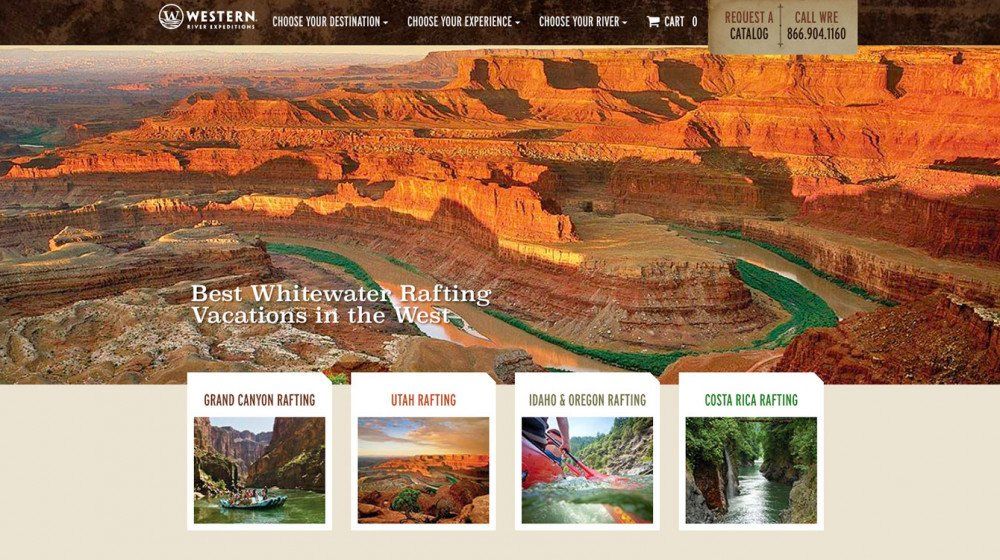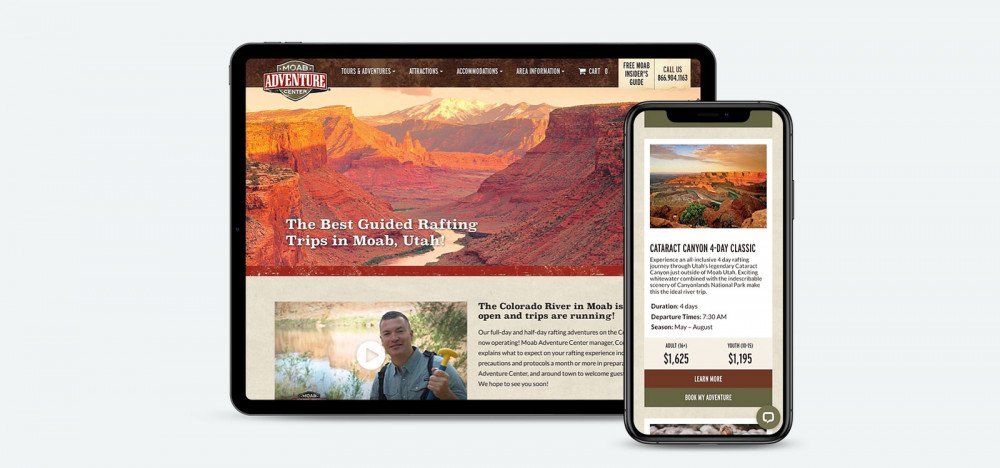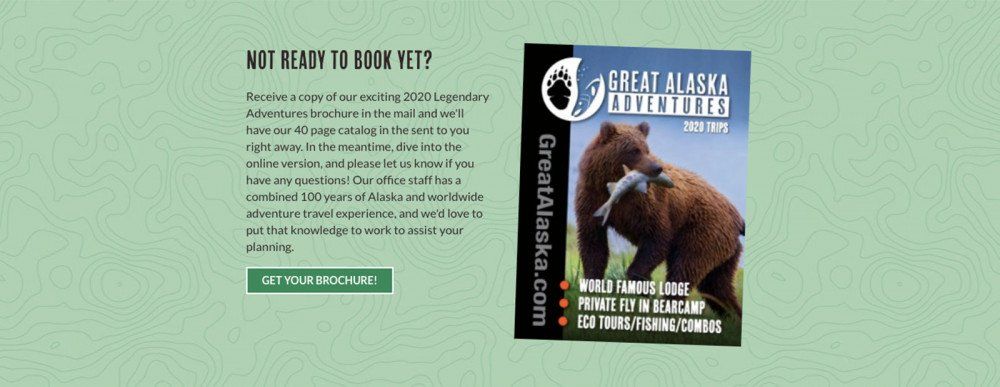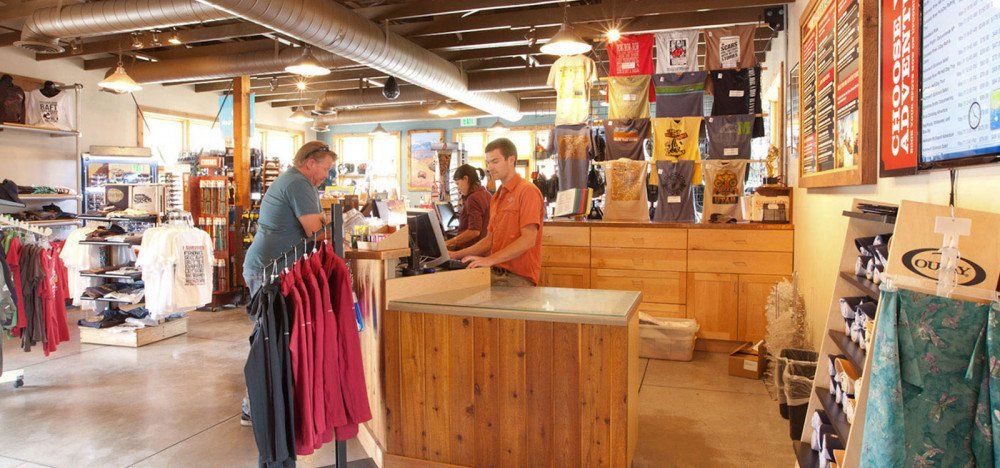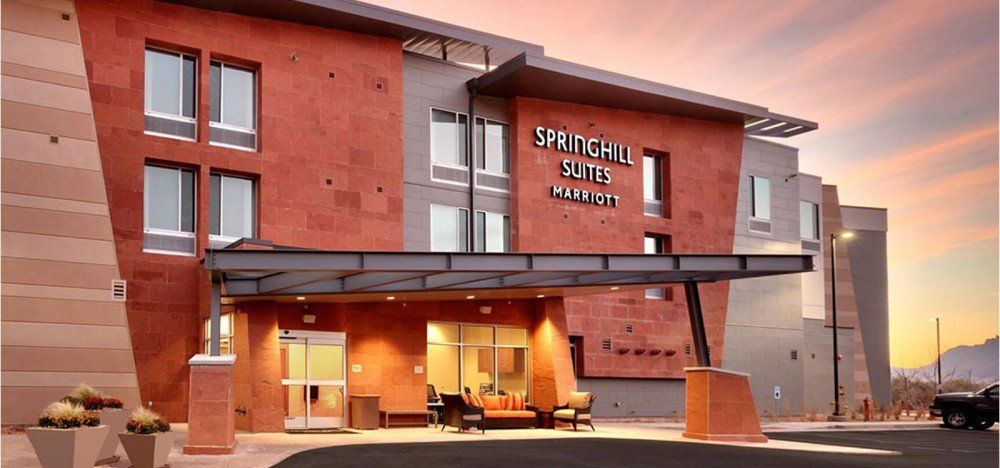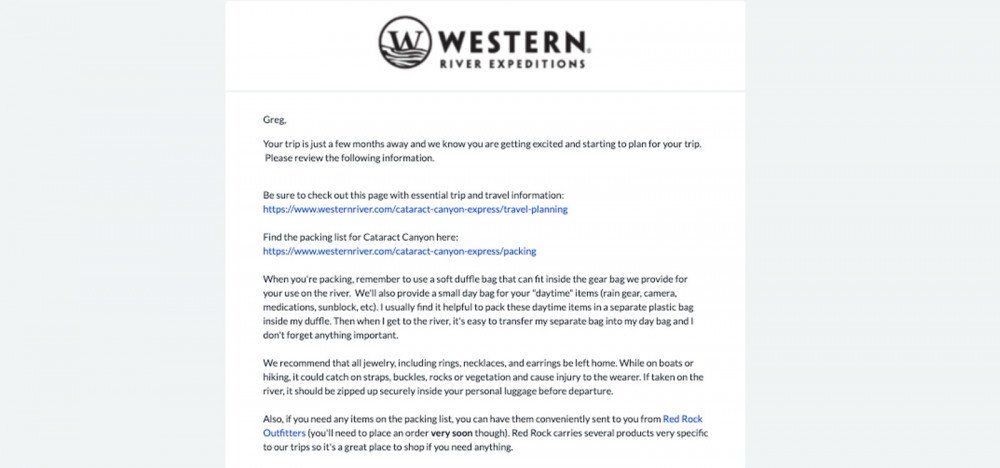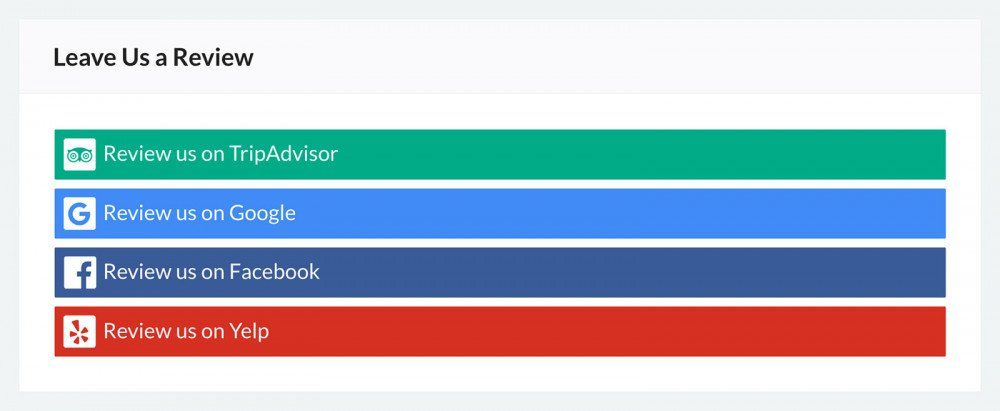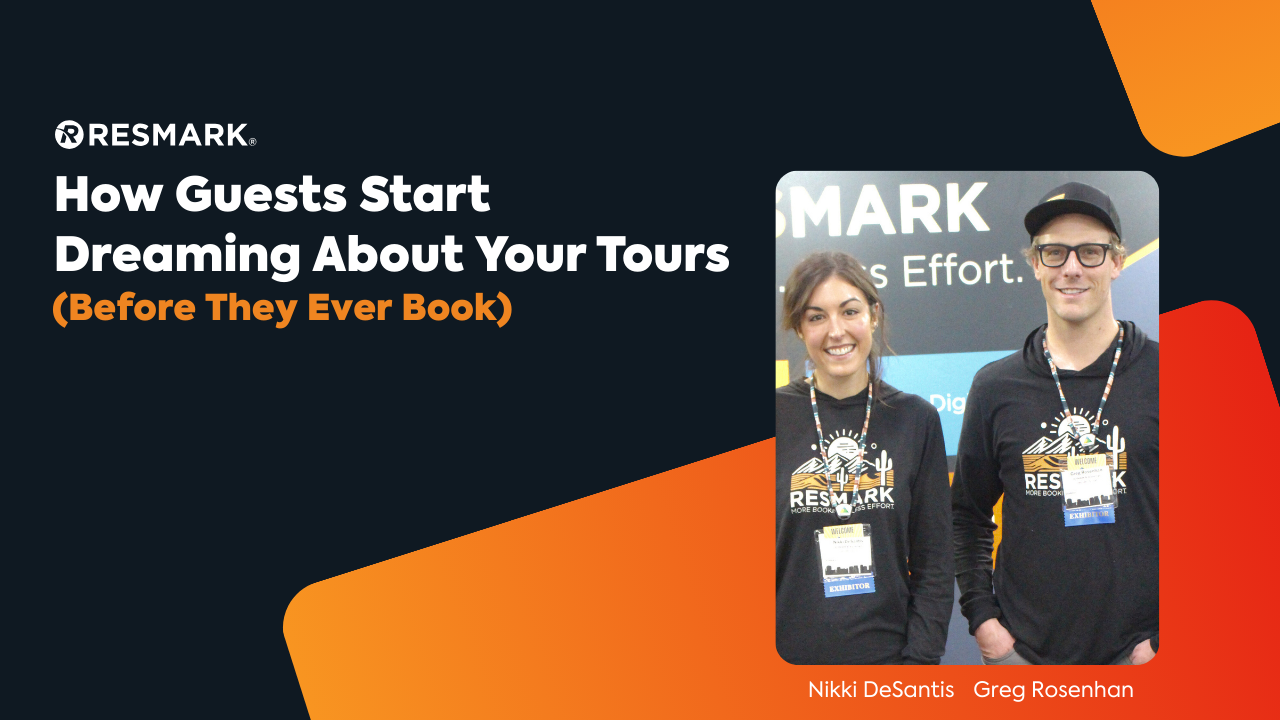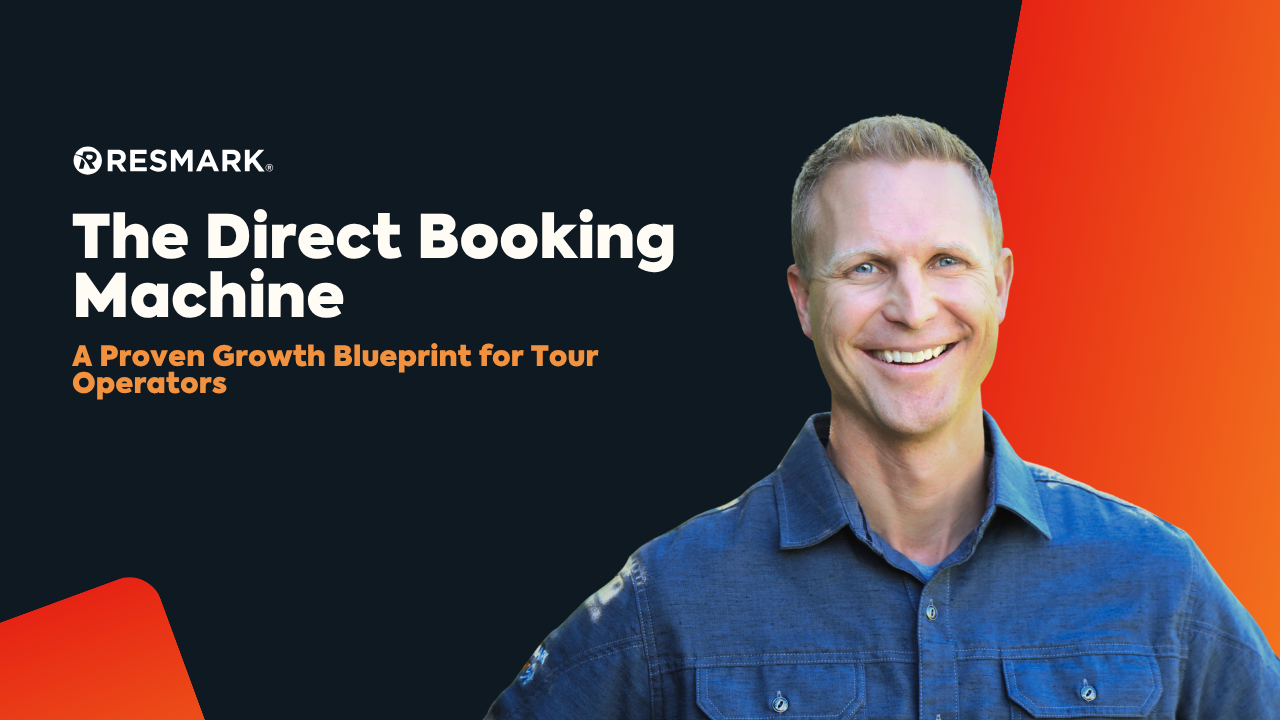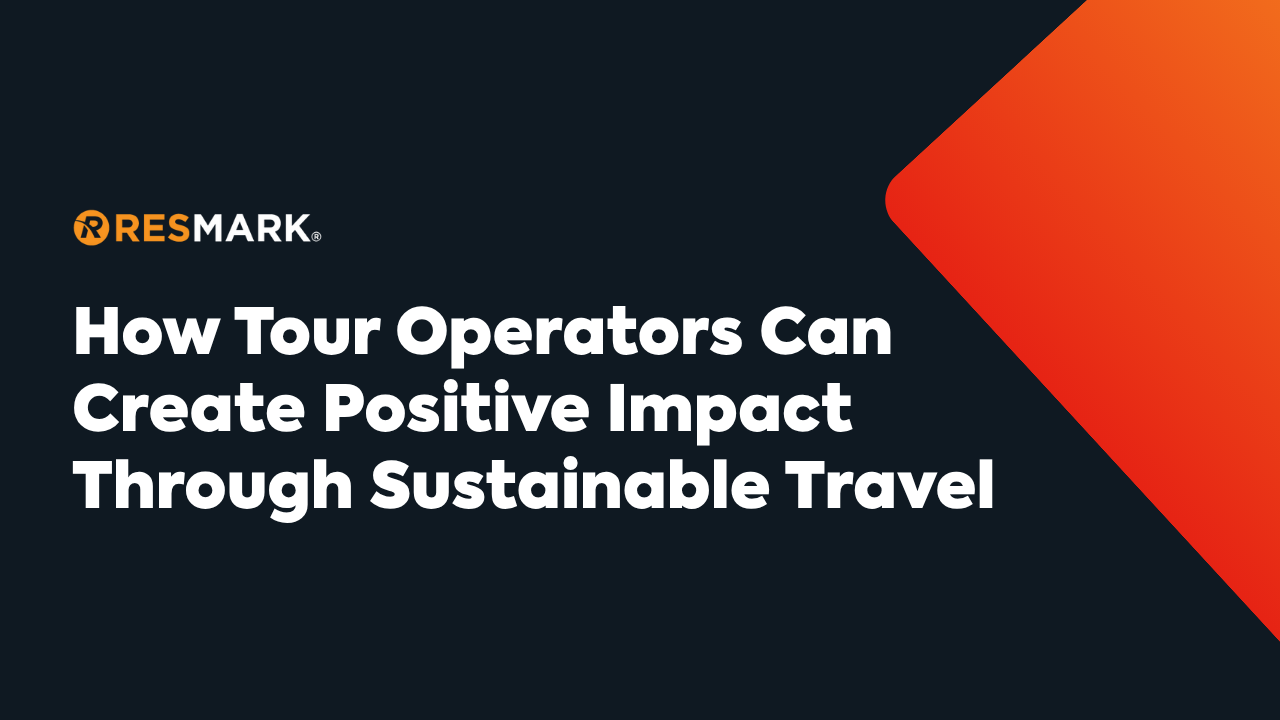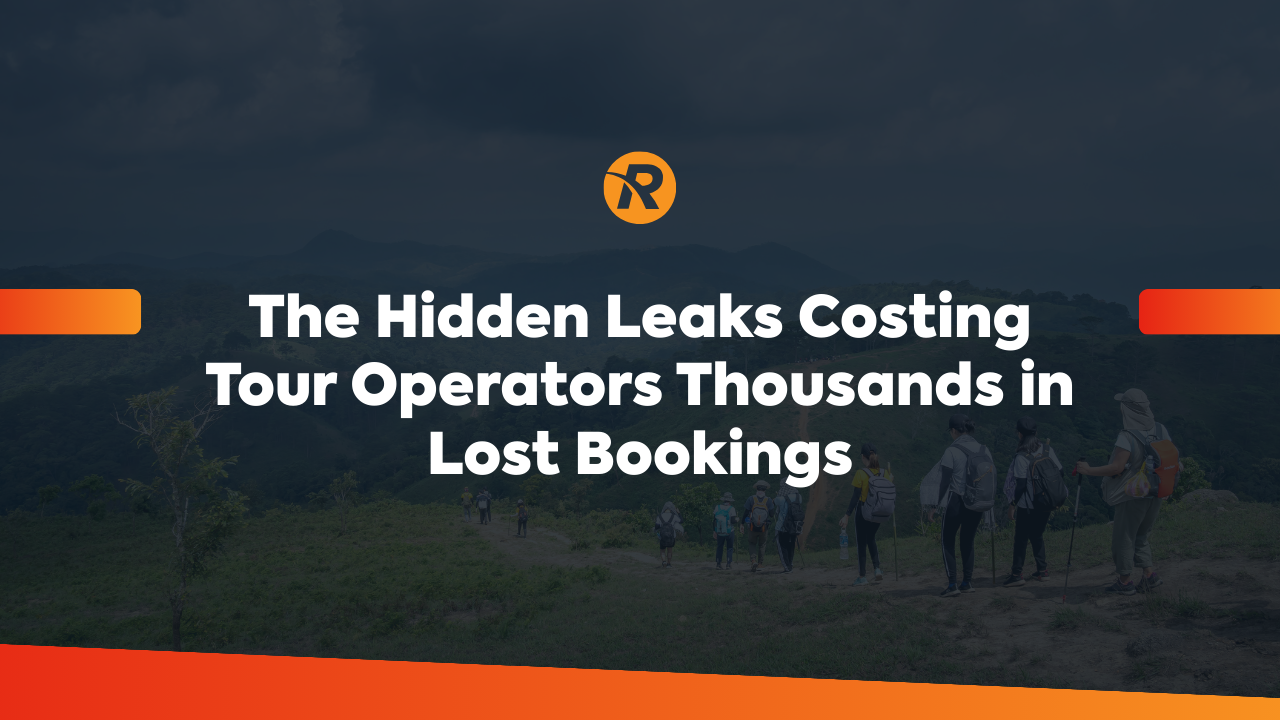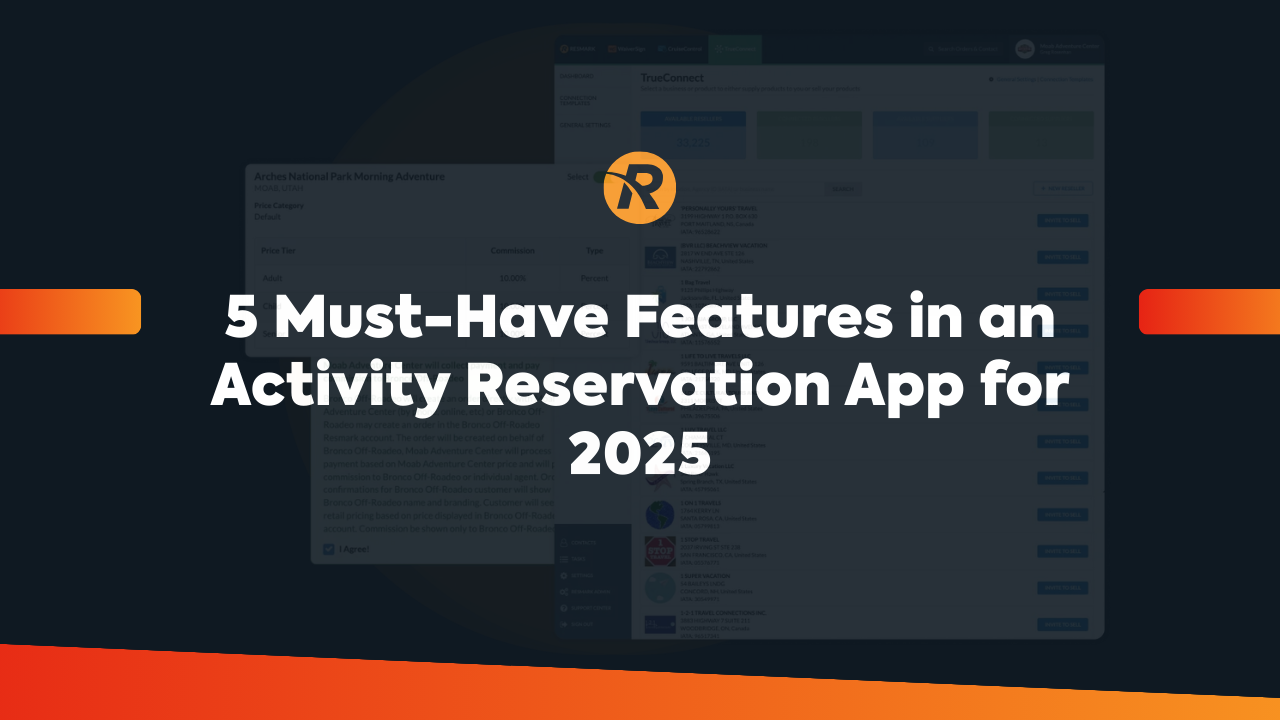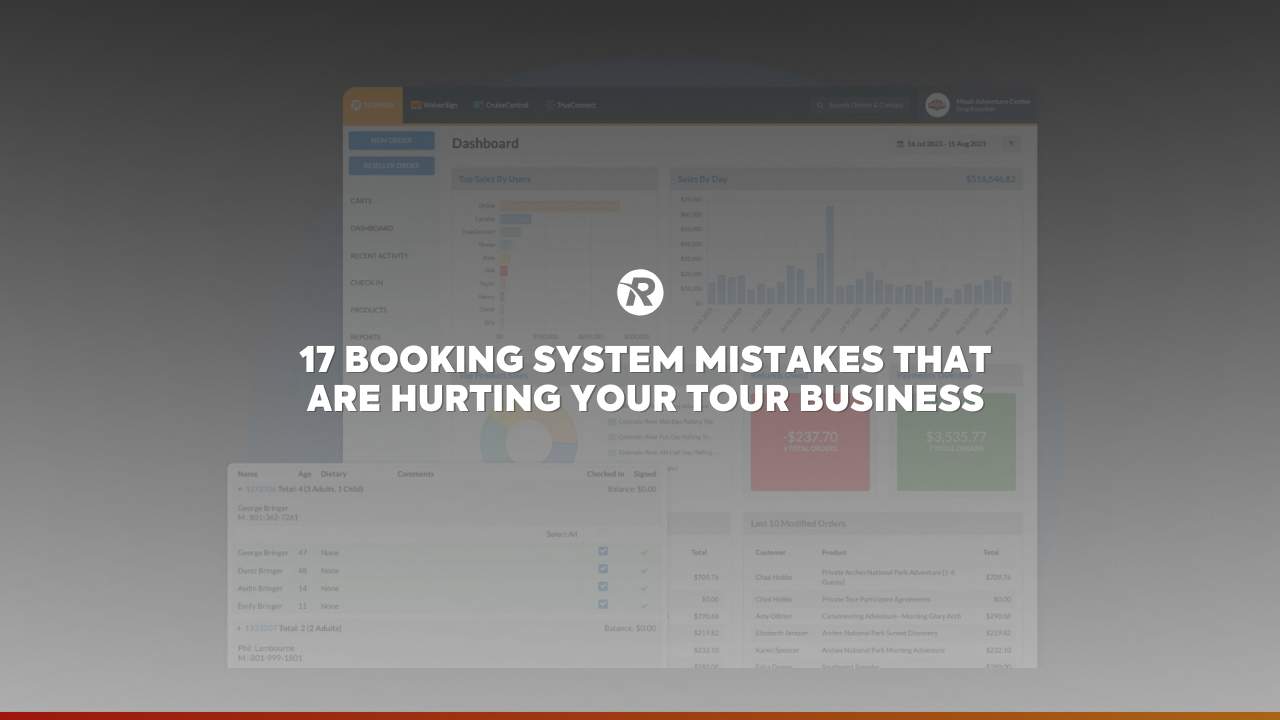8 Tips for More Last-Minute Tour and Event Bookings
Some people are consummate planners. When they take vacations, for example, they know where they are going and what they are doing six months or more in advance. They might research their vacations for years before making financial commitments. By the time they’re done, every moment of their trip is so meticulously scheduled that it makes even Batman look unprepared.
Most of us are not those people.
Now, it's true that transportation and hospitality are typically arranged in advance, even for severe procrastinators. But it's incredibly common for travelers to wait until they arrive at their destination to plan their activities. According to Phocuswright, over 50% of travelers book their activities the week of, and nearly 40% book within 48 hours of the start date.
What we're saying is, there’s ample opportunity to capitalize on guests looking to make last-minute tour bookings. And in this article, we're going to draw on our 60 years of experience in the industry to explain exactly how you can do that.
1) Build a Killer Website
If you learn nothing else from this article, remember this: you need a solid website. And we're not being vague here—we're going to drill down into the specifics. But the overarching principle is simple: a subpar website will result in fewer sales.
And we're not saying you have to shell out tens of thousands for a web developer to build you a site from scratch. There are a lot of cost-effective options on the market right now. Websites like Wix and Squarespace make building a website very straightforward, for example. Some tour booking systems even offer website platforms, or website building services. These options allow you a high level of customization—more than enough for your average small business.
Just having a website, though (whether you already do, or still need to build one), is not enough. There are a few things your website needs in order to do its job right. Let’s go over the biggest ones.
Make It Look Nice
First and foremost, your site needs to look up to date. Perception is everything on the web. High-quality videos and images sell more tours. We've come a long way from the objectively bad websites of the nineties. That said, some sites are still lagging behind in the aesthetics department, and it's costing them sales.
Your website is your company's curb appeal—people make judgment calls about how established and trustworthy you are based on what your homepage looks like. You need them to be making those calls in your favor.
Making your website look professional requires a couple of things, and it gets a lot easier if you're using a website-building platform (like we mentioned above). You'll need high quality, professional-level images and pictures. You'll need a solid logo. You'll need a complementary color palette that matches your company's branding. And then you'll need a visually appealing layout.
If you know someone with an eye for design, color, or that sort of thing, have them take a look at your site and make some suggestions (and seriously consider their input). If not, consider finding a professional and paying them for a consultation. We promise, just sprucing the place up will cause an increase in sales, and you’ll be happy you made the investment.
Make Booking Easy
After website design, you have UX (or user experience). The key to a good UX is giving users the shortest, easiest path possible to what they want. And what you're hoping they want is to book an activity with you. So make it easy on them: put the “book now” button on every page, in places that make sense, like at the top and the bottom of the page.
Of course, for this to work its best, you'll need that button to take them to a page where they can actually book online (which is probably going to take an online booking software), but even if it just takes them to the contact page where you keep your phone number, that's better than nothing. Just make sure that the button is within reach, regardless of what page they're on.
Make It Visible
Your website does very little to help you drum up business if nobody can find it. Now, making your site rank higher on search engine results is a field of expertise in its own right (and mostly outside the scope of this article), but there are two terms you need to know (and become familiar with) if you want people to see your business’s name when they Google "underwater orca rodeo" (or whatever kind of tour you sell). Those terms are:
- SEO (search engine optimization)
- Content Marketing
SEO is all about (among other things) search keywords, and how to use them so Google recognizes that your site should be associated with those words. Content marketing is all about creating content (blog posts, podcasts, videos, infographics, etc.) to boost SEO, and to create an audience you can advertise to. In both cases, you'll have some research and legwork to do, but a little can go a long way to making you rank higher in search results.
Keep in mind, you also have to worry about whether or not your site is up to date. This isn't a huge problem if you're using a site-builder platform, but if you've built your site from scratch, be aware that sites coded using older programming practices don't rank as high as those using more modern systems and languages.
Make It Mobile-Friendly
This last one is simultaneously the simplest, and the most complicated piece of advice. What you need to know is that more and more people are using mobile devices to do their web browsing. It's already an established fact that most web traffic comes from mobile, and it's a gulf that's only going to get wider as time goes on.
If you want people to book on your website, it has to be easy to use your website. Making a site mobile-friendly will require technical expertise if you built your site yourself, but if you’re using one of those platforms we mentioned, a lot of it may be taken care of already. Just make sure your site looks as good on a phone as it does on a computer—loading speed, formatting, scroll functionality, online booking, the works. You'll thank yourself later.
2) Connect with People
Once you've fixed up your website, you’ll (hopefully) start seeing more click-throughs, page views, and just more traffic generally. Your next step is to turn all of those browsers into buyers. You do that by finding ways to interact with them.
There's a number of ways you can turn a user into a “lead,” but pretty much all of them involve offering them something they want in exchange for their contact information. One method we’ve found success within the industry is by offering an "insider's guide" to the area your business is located.
People who come to your website are there because they're looking for something to do at a particular destination. They're travelers, and they're not familiar with your location, so they're trying to determine what their options are. If you offer them a guide to that location, though, it will be easier for them to find what they want to do, and they'll be able to enjoy their vacation more.
The insider's guide method makes them feel special and associate a positive feeling with your brand.
What do you get out of the exchange? Their email, at the very least. With this, you can send follow-up emails to suggest activities in the area, provide additional resources, and just generally give them reasons to like your company. As you do, you'll build a relationship that will very likely turn into a transaction.
You don't have to capture a lead through your website, though. You can actually do it over the phone if they call in. Just ask what their email is so you can, for example, send them some ideas for activities, or resources for local hotels, or something of that sort.
The idea here is to be helpful. Most people aren't ready to buy during the research phase (we call it the "dreaming" phase here at RESMARK), but if you keep your business top of mind, they'll remember you when they arrive at their destination.
3) Use Digital Upselling and Cross-Selling
If you sell more than one tour or activity, it's important to capitalize on upselling and cross-selling. Obviously, you want each buyer to buy as much of your stuff as possible, but a lot of businesses don't bother to offer anything else once the initial purchase is made. If you want more sales, offering more is something you should consider.
Now, there are two ways you can do this digitally. First, you can send them emails saying "You've bought X (or "put X in your cart"), why not also buy Z?" It won't always result in additional sales, but some customers will be happy to learn you have other experiences to offer, and that they can book more of the things they want to do without having to go somewhere else.
The second way it can be done is by using your online booking platform. Depending on what reservation system you're using to allow online booking, you may have the feature to upsell right there on the same screen. Amazon is a good example of this with its "people also bought" feature.
Not all reservation software has this feature, though, and not all of them advertise it when they do, so you’ll want to ask. Don't be afraid to call up the support team and drill them on relevant features that can help you cross-sell. There might be whole toolsets you’re not using yet; do a little digging, and make the most of your tour booking solution.
4) Ask for Last Minute Bookings
In the same vein as the previous tip, sometimes all it takes to get reservations is to just ask for them. You interact directly with customers all the time, both over the phone and during tours/activities. Getting people to make additional bookings is just a matter of teaching your staff how to make the request.
If your customer service staff is simply answering a caller's questions and hanging up, they’re missing out on potential sales. Teach them to ask follow-up questions, the most important one being "Are you already in town?" Once you know that they're in the area, it’s a lot easier to offer them open seats on tours that start in a day or two.
Get a feel for what kinds of activities they’re looking to do, and then make some recommendations. Don't be afraid to point them in the direction of other suppliers in the area (more on this below), as it shows you care about them getting the vacation they want.
It's also important to teach your guides to talk about other activities in the area as a natural part of their conversation during the tour. Odds are, during the course of the tour or activity, guests are going to pass by places where other activities happen. You just need your guides to talk about them and mention them as an option.
Statements like "This is a popular rock climbing spot, and we actually offer tours that do that here," or "You think this is fun, you should try that." However you do it, make sure the guests know you offer more than just a single tour.
5) Partner with Other Suppliers and Resellers
A couple of years ago, we realized that tourism numbers in Moab were still going up, but sales numbers at our Moab Adventure Center weren't. What did we do to remedy this? We started selling tours offered by other suppliers in the area. We made the Moab Adventure Center a one-stop shop for all things Moab, and sales dramatically increased because of it.
What's important to remember is that your fellow tour suppliers and operators aren't your competitors. Yes, you’re all looking to occupy a valuable slot in your guests' time. But that doesn't mean you can't work together to reach that end.
By partnering with other businesses and cross-selling each others' tours, you make it easier for guests to find what they’re looking for, and sales increase across the board. After all, who doesn't want more advocates for their business?
It's also important to consider partnering with other kinds of resellers. Hotel concierges, travel agents, and other individuals that provide industry insight for guests are all good options. Again, the more people selling for your business, the higher your sales numbers will be.
You don’t even have to limit your partnerships to just businesses and professionals in your area. Expand outward; the internet makes the world a very small place, so find like-minded individuals wherever you can, and partner with them.
This tactic is most effective, though, when everyone knows how many seats you have available. Now, you can just manage this all over the phone, taking calls every time a potential guest even asks about availability. Or, you can use digital event software that allows you to connect to all these resellers.
With the right system, you can manage real-time inventory, and your resellers can book real-time inventory, all from the same online booking platform. With some solutions, you can even embed "book now" buttons on their website, making it as easy as a single click for users.
A Word About OTAs
The use of OTAs (online travel agencies) is a hotly debated topic in the industry, and for good reason. These sites (like Expedia, Hotwire, etc.) can dramatically broaden your market reach, putting you in front of potential guests you might never have reached otherwise. The problem is they usually take a very steep commission.
While that's obviously less than optimal, you can limit how much inventory they are allowed to sell, essentially reserving some seats for the OTA to fill, and keeping the rest open. If done right, this can boost revenues without having to sacrifice too much on profit margins.
In other words, OTAs have their pros and cons, but they’re at least worth a look. If you think you could benefit from a wider audience, don't be afraid to call them up and ask them some hardball questions. It might turn out to be a profitable option for your company.
6) Go Where the People Are
Your destination attracts visitors. It's why you have a business where you do. Sometimes finding more sales is as simple as making your presence known in places where those visitors tend to congregate. That means places like hotels, shopping centers, restaurants, transportation hubs, and other places like that.
How do you do that, you ask? It's up to you. You could go simple, with flyers, posters, cards, and other things you can post on a physical bulletin board. You can go big, with billboards, or ads for TV, radio, or local newspapers. You can produce brochures, leaflets, or magazine-style guides that can be placed in gas stations, hotel lobbies, airports, and the like.
You can go high tech, and set up a kiosk in places like hotel lobbies, and equip those kiosks with tablets advertising "things to do in the area" that route them to your website to book tours. Or you can go for the human touch—building relationships with local hospitality employees (especially concierges) so that when guests come to the desk asking for popular activities, they mention your tours.
There are a lot of ways you can effectively "broadcast" your presence locally, and each of them is an excellent way to attract guests who have already begun their vacation.
7) Communicate With Your Guests
These last two tips are about people who are already customers—those who have booked a tour, and those who have completed the activity, respectively. See, much as major corporations like to overlook this, individuals who have already given you their money are still people, and they deserve a little TLC like everyone else.
And one of the best ways to show your guests-to-be that you appreciate them is by following-up with them via email.
What you send them will depend on you. You can send them a reminder of what to bring, a teaser email titled "What to Expect," offer them other tours and activities (as mentioned above), share customer testimonials (more on that below), or pretty much anything you can imagine. In some ways, what you send is less important than actually sending something.
The goal, here, is to get them excited about their activity. You want them looking forward to their experience with you, and well prepared to make the most of it. It doesn't have to be a lot of emails. It could even be just one. But let them know that you haven't forgotten about them and that they shouldn't forget about you.
A Note About Marketing Automation
Now, obviously, you can do all this by hand. You can personally send out each email (or email blast), entering each email address into the bar each time. That's time consuming though, and difficult to manage. Marketing automation can take a lot of that work off of your hands, and simplify the process considerably by handling all the lists and emails digitally.
There are a number of solutions on the market, but they tend to either cost an arm and a leg or severely limit the number of addresses you can store. If you’ve chosen the right tour booking software, though, marketing automation will be part of the toolset, integrated into the rest of the solution. Not that we know anyone personally who does that (*wink wink, nudge nudge*).
8) Encourage Word of Mouth bookings
Lastly, you need to be doing what you can to give guests a positive experience (obviously), but you also need to be giving them ample opportunity to share their experiences with others. We're talking reviews, ratings, and testimonials here, people. Customer feedback, if you will. These days, people put a lot of stock in digital "word of mouth," and it's important to capitalize on happy customers.
Here's some hard data: 97% of users read reviews for local businesses. That means people are almost certainly looking at your business before deciding to buy. More importantly though, 90% of people say that positive reviews influenced their buying decision. And even bumping up your Yelp rating a single star can result in a revenue increase of as much as 9%.
Now, sites like Google My Business, Yelp, and TripAdvisor aren’t the only places that reviews and ratings can be put. You obviously want your guests to put their positive feedback there, but it’s not the only medium you can take advantage of. You also have social media to consider.
Depending on what social networks you're on, even a little positivity on your profile can leave a huge impact. When people look at your profile and see former guests leaving testimonials about their wonderful experiences, they'll be far more likely to book with you.
On the other hand, getting those testimonials yourself to use on your website and marketing materials is another good idea. People are often more than willing to give a response when prompted, and those responses are incredibly valuable.
Of course, there’s the obvious problem: not everyone gives feedback at first. It can take some prodding to get people to care enough to leave a review (a fact every smartphone app is a little insecure about).
Yet again, this is where email comes in. Setting up a marketing automation workflow to send a message automatically, say, 30 days after the guest's trip is a good way to do it. Ask if they enjoyed their experience and if they'd be willing to share it—either with you, on a review site, or on social media. Not everyone will respond, but you’ll get quite a few more than normal.
A Tip About Negative Feedback
You're probably thinking, "If positive feedback is so great for business, what’s negative feedback going to do?" That’s a valid concern. Not every customer is going to be a happy one, regardless of your best efforts.
Our advice? Don't be afraid of it.
Bad reviews and ratings come to every business, brand, and product. If you don't believe us, try looking up the one-star reviews for your favorite restaurant, book, or Youtube video. We promise you'll be quite surprised.
Now, don't confuse "don't be afraid" with "ignore it and it will go away." While you don't need to hide or bury bad reviews, you do need to try and address them. Reply to them wherever you find them, and try to address their concerns. A lot of times, you can turn a bad review into a positive one with some post-purchase customer service. It's always worth a shot.
And for those customers who apparently don't want to be happy? Just do your due diligence. People can tell when a customer is being whiny and unreasonable, and after trying to answer their concerns you'll seem that much more sane and considerate in comparison.
Bottom line: as much as people like to read customer feedback, they trust engaged and understanding customer service responses even more.
A Warning About "Buying" Reviews
Some businesses like to shortcut this feedback system by "encouraging" positive reviews. This can take a number of forms—offering freebies for five-star ratings, giving discounts for positive Facebook comments, or even straight-up paying someone to write a good review (even if they've never been a customer).
This is a bad idea. Not only is this questionable ethically, it's often easy to pick out the disingenuous feedback, and people usually find out eventually. You don't want to be labeled as a company that cared more about their online reputation than their customers' experiences, so avoid this "black hat" tactic at all costs.
Conclusion
Growing a business, no matter the industry, is a lot of work. It takes a lot of know-how, some of which you won't have, and may not be able to pay for yet. But if you know where to look to learn the basics, and you have the right tools, getting more last-minute bookings—or just more bookings in general—can happen a lot faster than you think.
Share This Post

